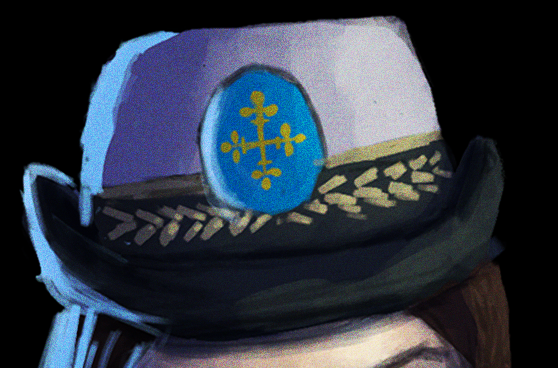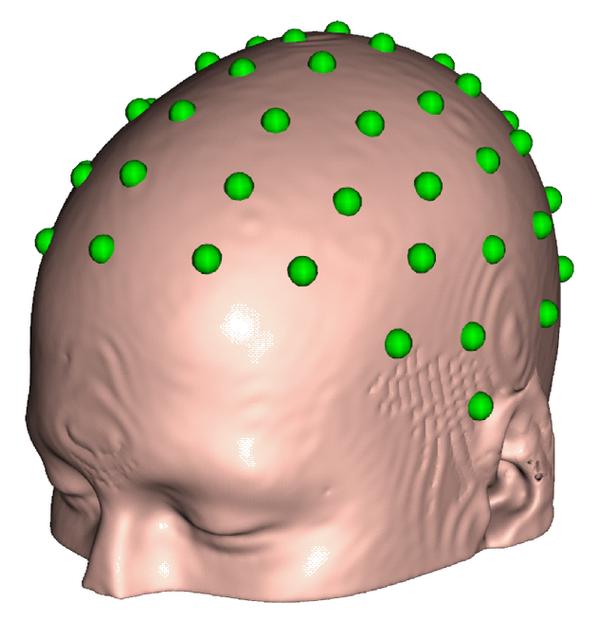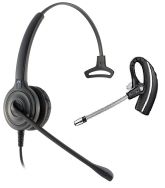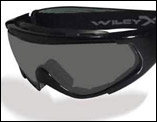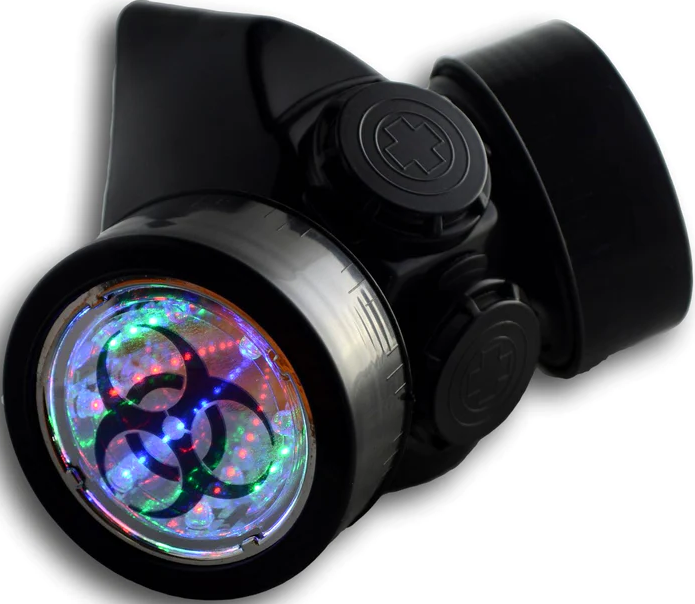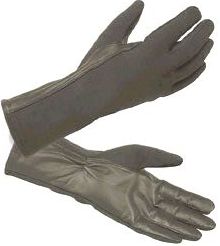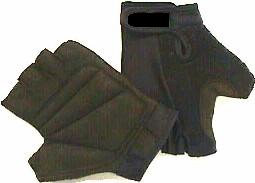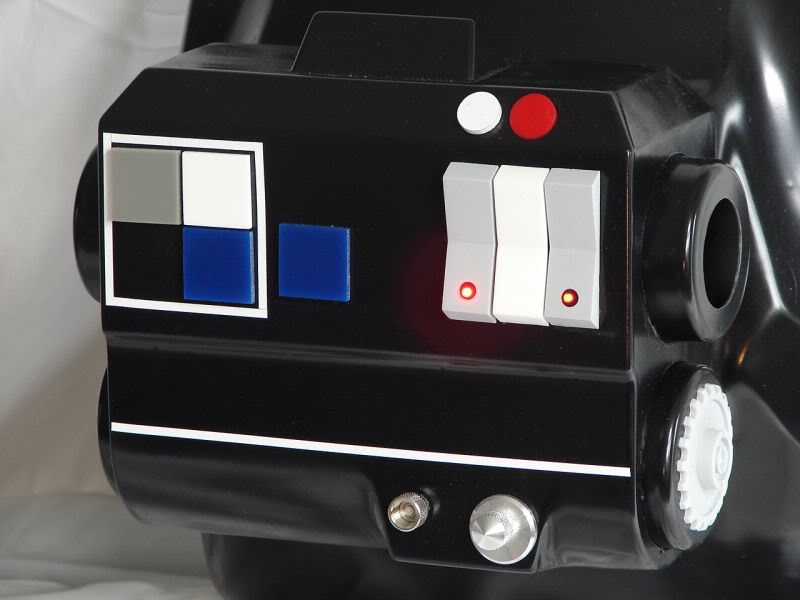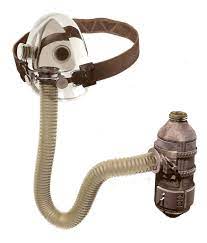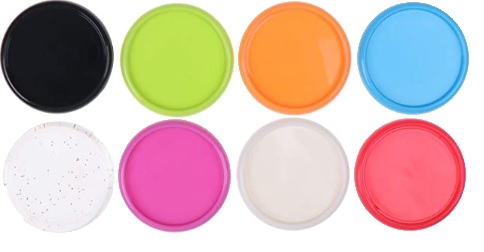


 | Under Development. |  | ||||||||||||||
|---|---|---|---|---|---|---|---|---|---|---|---|---|---|---|---|---|
Flown By Militry Bases And Ships. | Flown By Militry Bases And Ships. | |||||||||||||||
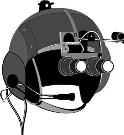 Multi-Optic Helmets: While a wide variety of these incredibly useful systems exist, one of the more popular is the AR-117, originally designed for motorcycles use, then adapted for helicopter gunship use. Multi-Optic Helmets: While a wide variety of these incredibly useful systems exist, one of the more popular is the AR-117, originally designed for motorcycles use, then adapted for helicopter gunship use.All multi-optic helmets provide the following features: Infrared:; Magnification: 100 times; Effective Range: 20,000 feet. Ultra Violet; Magnification: 20 times; Effective Range: 50 feet. Night Sight; Magnification: 5 times; Effective Range: 100 feet. Color Filters; Magnification: 100 times; Effective Range: 10,000 feet. Thermal Imaging; Magnification: 20 times; Effective Range: 100 feet. Specifics may vary by model; Most include a headphone, though some do not. Weight: ½ to 3 lbs. Cost and Availability: 100 credit each/Always. Black Market Cost and Availability: Between 10 and 100 credit/Black market versions are rarely available. Bio-Emulator: A bio-emulator is a  piece of technology designed to create false Protoculture readings typically produced by Mecha. Because the Invid are capable of detecting such emanations a bio-emulator could be used to lure Invidia/Invidista Forces into traps, and are often rigged to a proximity-detonation system. However, the bio-emulator has one major flaw; It creates an uncommonly steady emission making it noticeably different from a true Protoculture emission. piece of technology designed to create false Protoculture readings typically produced by Mecha. Because the Invid are capable of detecting such emanations a bio-emulator could be used to lure Invidia/Invidista Forces into traps, and are often rigged to a proximity-detonation system. However, the bio-emulator has one major flaw; It creates an uncommonly steady emission making it noticeably different from a true Protoculture emission.As a general rule, possession of such a device is evidence of anti-Invid terrorism, and should only be used by authorized persons (it is considered a WMD/Terror Weapon in its own right, even though it doesn't have any intrinsic weapons elements). Effect: 80% effective. Weight: 8 lbs. Cost and Availability: Generally 50 credit; Almost always available to militry personnel and mercs who specialize in hunting Invidia/Invidista forces; Most commonly available from the Invid themselves (only on Optera/New Paraxia). Cobalt Limpet Mine: A simple, magnetically 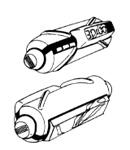 or grav-pod attached device used to blow up just about anything desired. Can be rigged to blow together or staggered, remotely or on a command detonation (wirelessly or hard line). or grav-pod attached device used to blow up just about anything desired. Can be rigged to blow together or staggered, remotely or on a command detonation (wirelessly or hard line).MD: 1D4×10. Rate Of Fire: One Time Only. Effective Range: 20 feet. Payload: Each leg can have up to 20 of these mines. Bonuses/Penalties: Automatic strike against anyone in range. Type 12 Field Computer: A basic rugged 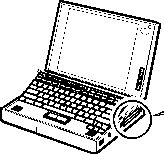 computer specifically designed to reliably operate in harsh environments and conditions; Can be linked to CS-012 and XTNDR pods. The built-in hardscreen is necessary to ensure operation under all conditions, but a holographic display allows anyone to observe what is being done on the computer, or displayed, easily. It can also be linked into large display screens of any sort, surround sound systems, printers, etc. They have a built-in scanner system, as well at two-way video chat system (can in fact display who you're talking to as a hologram). computer specifically designed to reliably operate in harsh environments and conditions; Can be linked to CS-012 and XTNDR pods. The built-in hardscreen is necessary to ensure operation under all conditions, but a holographic display allows anyone to observe what is being done on the computer, or displayed, easily. It can also be linked into large display screens of any sort, surround sound systems, printers, etc. They have a built-in scanner system, as well at two-way video chat system (can in fact display who you're talking to as a hologram).Effect: 90% effective. Weight: 05 lbs. Cost and Availability: 200 credit; Always available. Thinking Caps: Thinking caps were a controversial piece of technology for decades through the PLENIPOTENTIARY COUNCIL due
Very low end thinking caps consist of a net skull caps with a dozen or so nodes roughly 13 inch in diameter; Very high end thinking caps consist of nets with thousands of nodes barely over 13 mm. All REF covers have thinking caps integrated into the material, and many companies across the UGC sell mid- and high-end thinking caps integrated. The caps can be cross-linked to almost anything else mentioned here. Effect: 80% effective. Weight: Low end personal versions are as light as a few ozs, high end ones as much as 1 lbs. Mainfraim units are about 10 lbs. Cost and Availability: Low end examples run as low as 60 credits; The top tier models (macro nodes integrated to designer covers) can run 5,000 credit; Always (they can even be found in toy stores and the toy sections of department stores, at truck stops, and liquor stores). Militry thinking caps run about 10% more than equivalent civilian models. Wifi enabled civilian models run about 5% more, and are most common (though most also have jacks for backup hard line). Universal Translator: Used to improve communications galaxies-wide; Can be hooked to any major piece of communications equipment,  including cell phones and headsets. (The model depicted is intended specifically for use with cell phone; Insert the antenna like part into your cell phone at the head set jack.) Can hold up to 2,000 languages at a time (new languages can be uploaded for free, but another one must be removed to allow the memory). including cell phones and headsets. (The model depicted is intended specifically for use with cell phone; Insert the antenna like part into your cell phone at the head set jack.) Can hold up to 2,000 languages at a time (new languages can be uploaded for free, but another one must be removed to allow the memory).Effect: 85% effective. An experienced user will be able to raise that to 98% per language. Weight: Rarely more than ½lb. Cost and Availability: 2 to 15 credit; Always available (often comes with another product as part of the package). Head Set: About 7 TRILLION different models of head jacks exist for every known sentient species in the UGC, but all of them have one of two things in common; The jack used to
Effect: Frees hands when using communications equipment. 100% effective while plugged in. Weight: From a few oz to a about ½lb. Cost and Availability: Between 2 and 10 credit; Always available (many products come with a headphone system included as part of the total package). Personal Data Assistant: A combination of  digital camera, cell phone (some models work as satellite phones), camcorders (about 20 minutes worth), notepad (some models allow a printout), recorder (usually used with a microphone), universal translator (occasional, usually cost about 10% more). The UEG specifically underwrote a program to create a PDA with an 8" screen and flip-open function to a full keyboard. It had to include an antenna extension, connected and bluetooth headpiece system, WiFi compatible, 72 hour battery life (under all conditions), and, interestingly enough, a connected watch system (without keyboard option). The full unit had to ship with a headphone that could be connected by wire or bluetooth, the watch, and a wire antenna extension. Once the winning entrant was selected, the UEG announced they would fully fund any company that promised to produce this unit for a full run (estimated to be about 2,000 units), and ½of each additional run, up to 100 runs. The goal was to flood the market with this type, ensuring it would become the standard; As such, the "Calgary" remains as such, with minor stylistic differences in the casing and sometimes the programming, and with the advent of the "Calgary IV" which allows a holographic view of the screen view (though the view becomes increasingly fuzzy as resolution reduces, ie, smaller images are made bigger). They can also connect to a WiFi-enabled computer as a peripheral device to that. digital camera, cell phone (some models work as satellite phones), camcorders (about 20 minutes worth), notepad (some models allow a printout), recorder (usually used with a microphone), universal translator (occasional, usually cost about 10% more). The UEG specifically underwrote a program to create a PDA with an 8" screen and flip-open function to a full keyboard. It had to include an antenna extension, connected and bluetooth headpiece system, WiFi compatible, 72 hour battery life (under all conditions), and, interestingly enough, a connected watch system (without keyboard option). The full unit had to ship with a headphone that could be connected by wire or bluetooth, the watch, and a wire antenna extension. Once the winning entrant was selected, the UEG announced they would fully fund any company that promised to produce this unit for a full run (estimated to be about 2,000 units), and ½of each additional run, up to 100 runs. The goal was to flood the market with this type, ensuring it would become the standard; As such, the "Calgary" remains as such, with minor stylistic differences in the casing and sometimes the programming, and with the advent of the "Calgary IV" which allows a holographic view of the screen view (though the view becomes increasingly fuzzy as resolution reduces, ie, smaller images are made bigger). They can also connect to a WiFi-enabled computer as a peripheral device to that.Effect: 90% effective. Weight: Less than ½lbs. Cost and Availability: 200 credit; A. 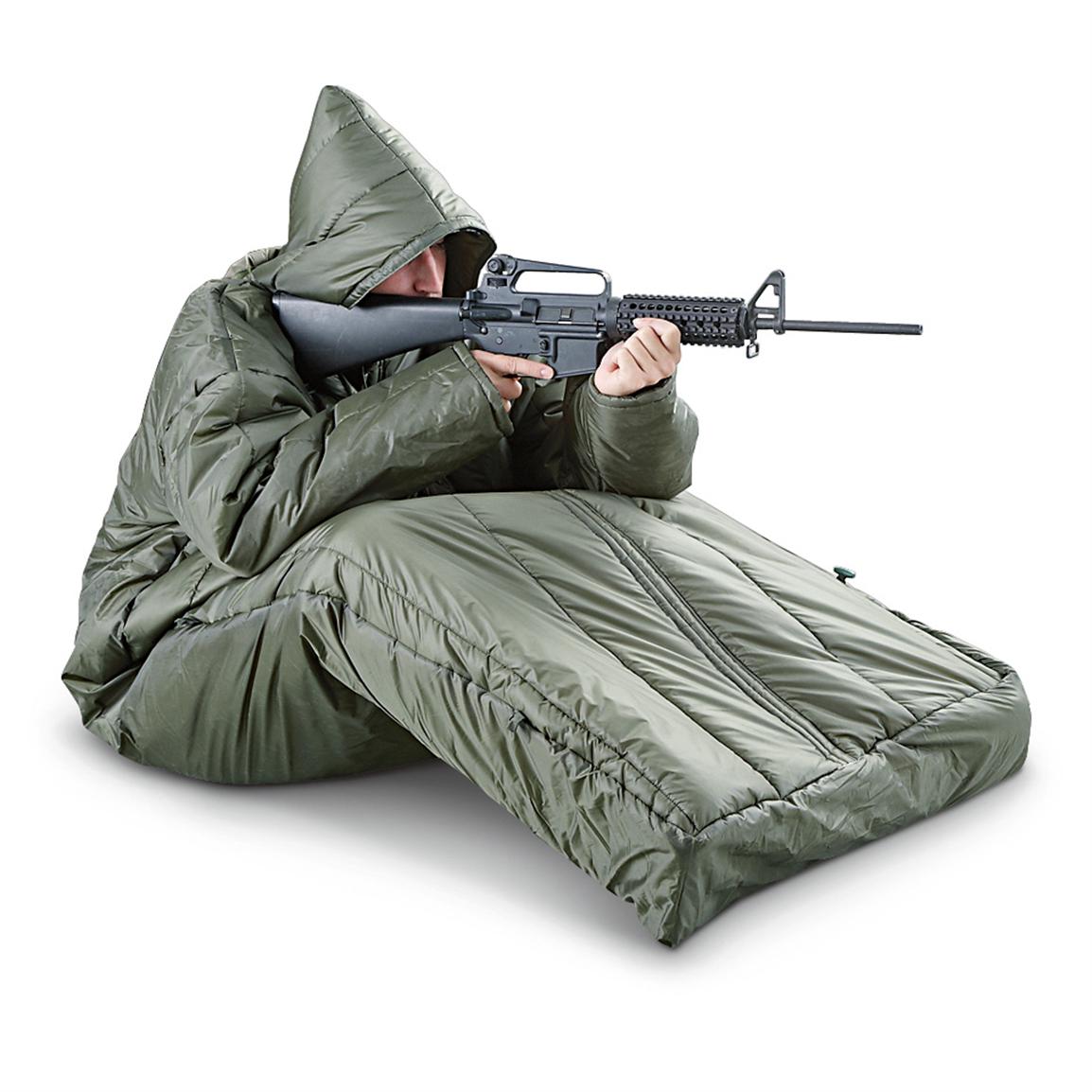 Combination Sleeping Bag/Parka: Water repellent polyester shell is combined with a soft cotton lining; 1⅒# of hollow fiber fill keeps user Warm from 25-35 degrees (depending on clothing worn). A secondary outer shell can keep a user Warm up to -18 degrees (covers from shoulders down). Unzip the bag below your waist to convert to a parka; Measures 90"×33"×22" extended and compresses to approximately 9"×8." Heavy Duty nylon zipper, drawstring hood and matching compression stuff sack. Available in woodland or desert camouflage, white, black, or red. Combination Sleeping Bag/Parka: Water repellent polyester shell is combined with a soft cotton lining; 1⅒# of hollow fiber fill keeps user Warm from 25-35 degrees (depending on clothing worn). A secondary outer shell can keep a user Warm up to -18 degrees (covers from shoulders down). Unzip the bag below your waist to convert to a parka; Measures 90"×33"×22" extended and compresses to approximately 9"×8." Heavy Duty nylon zipper, drawstring hood and matching compression stuff sack. Available in woodland or desert camouflage, white, black, or red.Effect: Keeps troopers Warm up to 25-35 degrees. Weight: 2 # total. Cost and Availability: 40 credit; Always available.  Nylon Holster: A simple gun holster; Generally any known type of standard pistol can fit into some type of holster, and most non-standard (oversized) pistols can fit into a holster (may need to be custom-made, add 25-50% to cost and availability to "common"). Nylon Holster: A simple gun holster; Generally any known type of standard pistol can fit into some type of holster, and most non-standard (oversized) pistols can fit into a holster (may need to be custom-made, add 25-50% to cost and availability to "common").Effect: 100% effective if used properly. Weight: ½lb. Cost and Availability: 65 credit; Always. Shoulder Holster: Allows a firearm to be carried under the shoulder, rather than on the hip. NOTE: Can also be used in lieu of shoulder holsters at some units. Required at aviation units. Effect: 90% effective. Weight: Less than 1 lbs. Cost and Availability: 20 credit; Always. 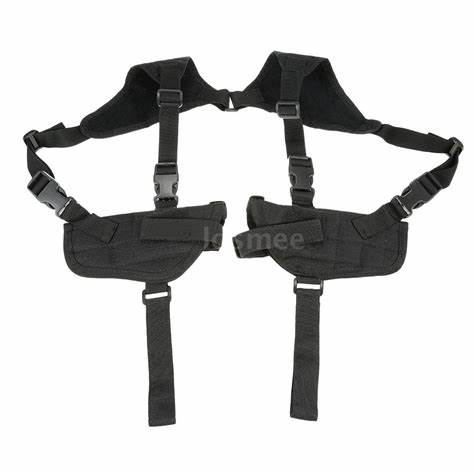 Dual Shoulder Holster: A dual-shoulder rig, allowing TWO guns to be used. NOTE: Can also be used in lieu of duty suspenders at some units. Allowed at all RDF/REF Aviation Commands and MOST police and security aviation units. Dual Shoulder Holster: A dual-shoulder rig, allowing TWO guns to be used. NOTE: Can also be used in lieu of duty suspenders at some units. Allowed at all RDF/REF Aviation Commands and MOST police and security aviation units.Effect: 100% effective when properly used; ZERO effectiveness when not properly used. Weight: 1 lb. Cost and Availability: 30 credit; This is generally an owner-made custom rig (roll jury rig skill at no penalty).  Fitted Quad Magazine Cases: Allows 4 pistol clips or e-clips to be carried on the belt. Fitted Quad Magazine Cases: Allows 4 pistol clips or e-clips to be carried on the belt.Effect: 100% effective. Weight:.25 lb. Cost and Availability: 29 credit; Always.  Silent Key Holder: Holds keys snugly so they don't jangle and make noise. Required at some units. Silent Key Holder: Holds keys snugly so they don't jangle and make noise. Required at some units.Effect: 80% effective. Weight: ¼lb. Cost and Availability: 12 credit; Commonly available.  Expandable Baton Holders: Holds any MAJOR brand of expandable baton. Expandable Baton Holders: Holds any MAJOR brand of expandable baton.Effect: 80% effective. Weight: ¼lb. Cost and Availability: 15 credit; Always. 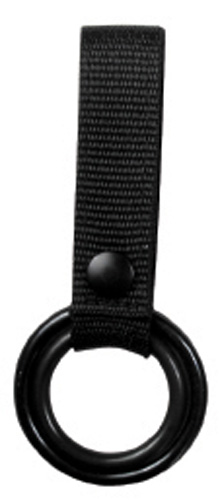 Combination Straight Handle Baton/C-Cell Light Holder: Holds a D-Cell flashlight in the big ring, or a straight or side handle baton in the small ring. Combination Straight Handle Baton/C-Cell Light Holder: Holds a D-Cell flashlight in the big ring, or a straight or side handle baton in the small ring.Effect: 75% effective. Weight: ¼lb. Cost and Availability: 6 credit; Always.  Side Handle Baton Holder: Specifically designed for side-handle batons. Effect: 80% effective. Weight: ¼lb. Cost and Availability: 7 credit; Common.  Radio Case: Hold radio on belt; Most are designed to allow the radio to be removed easily if necessary. Radio Case: Hold radio on belt; Most are designed to allow the radio to be removed easily if necessary.Effect: 95% effective. Weight: ½lb. Cost and Availability: 30 credit; Always. Open Top Mini-Light Case: Allows easier access, but at a chance the object might fall out. Effect: 60% effective. Weight: ¼lb. Cost and Availability: 10 credit; Always. Closed-Top Mini-Light Case: To hold mini-flashlights and other small, roughly dowel-shaped, objects. Effect: 100% effective. Weight: ¼lb. Cost and Availability: 11 credit; Always. | Double Cuff Case: Holds two standard mi'cronne-sized handcuffs. Effect: 100% effective. Weight: ⅓lb. Cost and Availability: 19 credit; Always. 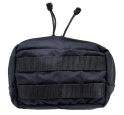 General-Purpose Case: A wide variety of small belt cases exist, ranging in size from ¼×½×1 inch to 5×3×6 inch. Effect: Varies by size and design. Weight: Never more than 1 lb. Cost and Availability: 13 credit; Always available.  Latex Glove Pouch: Designed specifically for latex gloves, can hold up to 6 pairs generally speaking. Latex Glove Pouch: Designed specifically for latex gloves, can hold up to 6 pairs generally speaking.Effect: 100% effective. Weight: ⅛lb. Cost and Availability: 10 credit; Always; even some non-uniform gear stores.  Chemical Agent Duty Case: Holds pepperspray (illegal on Fljyt and ineffective on T'sentradi), CS/CN (mace), and other similar product. The largest general size is the MK 7 (about 20 sprays). Also available for the Mk-10 as a thigh holster (add 25%) or with a thigh holster adapter rig (about 2 credit). Chemical Agent Duty Case: Holds pepperspray (illegal on Fljyt and ineffective on T'sentradi), CS/CN (mace), and other similar product. The largest general size is the MK 7 (about 20 sprays). Also available for the Mk-10 as a thigh holster (add 25%) or with a thigh holster adapter rig (about 2 credit).Effect: 90% effective. Weight: ½lb. Cost and Availability: 20 credit; Always. 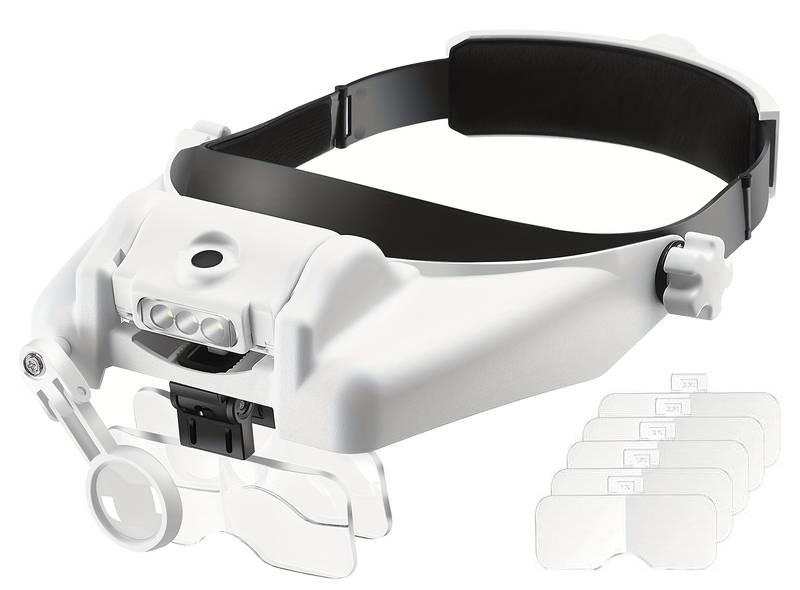 Magnifier Headband: Generally only used to magnify small objects at close range (medical purposes, creating art, machining jewelry, etc.) to reduce eye strain while improving accuracy. Consists of a head band with magnifying lenses attached to the front for hands-free use. Features can include alternate lenses for magnification, toggle lens for specific needs, lights, recorders, wifi connecters, etc. The Geiger Tech GT505 can be attached to GT12 Thinking Caps automatically. Magnifier Headband: Generally only used to magnify small objects at close range (medical purposes, creating art, machining jewelry, etc.) to reduce eye strain while improving accuracy. Consists of a head band with magnifying lenses attached to the front for hands-free use. Features can include alternate lenses for magnification, toggle lens for specific needs, lights, recorders, wifi connecters, etc. The Geiger Tech GT505 can be attached to GT12 Thinking Caps automatically.Effect: Improves short range detail vision; 100% effective. Weight: ⅛lb. Cost and Availability: 200-1,000 credit; Always. 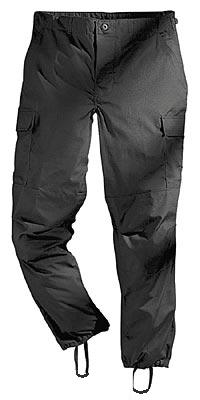 BDU Pants: Heavy duty, combat-ready pants. Also available in less militristic colors; There are also ladies pink BDU's (referred to a "Mate Hunting Cammies"). Effect: 80% effective if properly maintained and worn. Weight: N/A. Cost and Availability: 350 credit; Always. BDU Shirt: Heavy duty, combat-ready Shirt. Also available in less militristic colors. Effect: 80% effective if properly maintained and worn. Weight: N/A. Cost and Availability: 32 credit; Always. Backpacks: Sizes ranging from but-packs (4×6×12 inch) to monster sized seabag/duffle 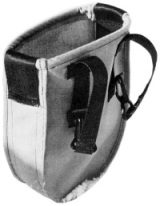 bag (2×6 feet). Variations include alternate carrying straps, single strap, cross-chest (not recommended for females), and even a few designs compatible with gunbelts and/or shoulder holsters. bag (2×6 feet). Variations include alternate carrying straps, single strap, cross-chest (not recommended for females), and even a few designs compatible with gunbelts and/or shoulder holsters.Effect: Varies by design. Weight: Never more than a few pounds. Cost and Availability: From 3-400 credit; Always available, but you will have to look around for some. Pup Tent: One- or two-man temporary shelters. Effect: 80% effective. Weight: About 10 lbs. Cost and Availability: 100 credit; Always. 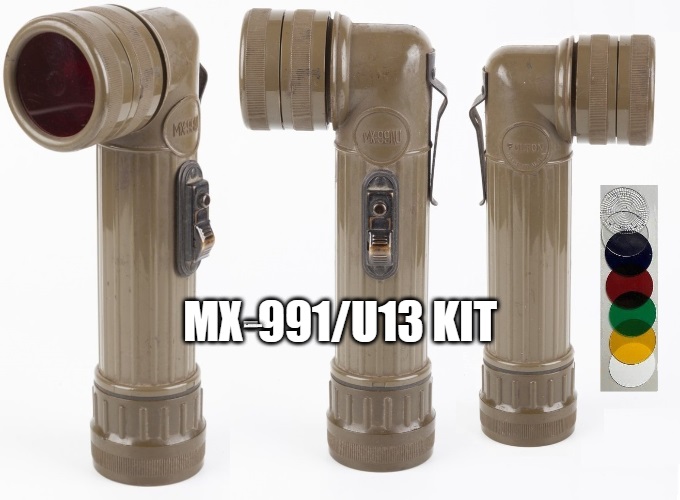 MX-991/U13: A fairly basic flashlight. The flashlight is bent 90 degrees to prevent rolling and to allow it to be carried on a harness or belt while being used. They come in a wide variety of color, with the basic militry models being light or dark green, brown, or tan. The Patrol issues an orange version for Search And Rescue; The AeroSpace Force issues a black model. Light and dark blue are also commonly available, as is a pink model for strictly civilian use. The flashlight also comes with multiple lens; Basic clear, frosted and frensel clear for position and signaling, red for use when low light conditions are required, blue, yellow, and green for signaling, yellow for special duty signaling by Militry Police/Forward Traffic Control and Air Liaison (as the yellow light doesn't interfere with targeting equipment), and white for Morse Code use. MX-991/U13: A fairly basic flashlight. The flashlight is bent 90 degrees to prevent rolling and to allow it to be carried on a harness or belt while being used. They come in a wide variety of color, with the basic militry models being light or dark green, brown, or tan. The Patrol issues an orange version for Search And Rescue; The AeroSpace Force issues a black model. Light and dark blue are also commonly available, as is a pink model for strictly civilian use. The flashlight also comes with multiple lens; Basic clear, frosted and frensel clear for position and signaling, red for use when low light conditions are required, blue, yellow, and green for signaling, yellow for special duty signaling by Militry Police/Forward Traffic Control and Air Liaison (as the yellow light doesn't interfere with targeting equipment), and white for Morse Code use.Effect: 100% effective as long as the battery holds out (generally 48 continuous use hours). Weight: .5 lb. Cost and Availability: 12 credit; Always. Canteen: About 1 to 5 gallons. Made of many different materials, including animal skins. Effect: 100% effective if properly cared for. Weight: 1 to 3 lbs. Cost and Availability: 10 credit; Always. Sleeping Bag: One- and two-man versions. Essentially the same as the combination parka/sleeping bag. Effect: 60% effective. Weight: 5 lbs. Cost and Availability: 30 credit; Always. Canteen: About 1 to 5 gallons. Made of many different materials, includimg animal skins. Effect: 100% effective if properly cared for. Weight: 1 to 3 lbs. Cost and Availability: 10 credit; Always. Survival Saw: A light duty saw, capable of felling trees up to 5  feet in diameter. If you look closely, you will note that this particular model has a button on the side; This is to prevent ACCIDENTAL opening and closing. Not suitable, in general, as a weapon. feet in diameter. If you look closely, you will note that this particular model has a button on the side; This is to prevent ACCIDENTAL opening and closing. Not suitable, in general, as a weapon.Effect: 60% effective. Weight: ½lb. Cost and Availability: 15 credit; Common.  Gas Mask: A mask put on over the face to protect the wearer from breathing in toxic chemicals. The mask forms a sealed over the nose, mouth, and eyes. The user is not protected from gas that the skin can absorb. They also come with a wide variety of features; Tinted lens, reversible mounting (typically used by left-handed shooters), canteen connectors, internal corrective lens inserts, voice activated microphone inserts, even attachments to allow them to be integrated into a larger protective ensemble (keeping off other chemicals, effectively becoming a limited exposure suit). Better quality ones exist, though the UGC uses only the M-335 (a derivative of the MCU-2P Mask Kit of Terra/USA). The faceplate has an intagrated heads up display that can be connected via bluetooth to any standard equipment. Gas Mask: A mask put on over the face to protect the wearer from breathing in toxic chemicals. The mask forms a sealed over the nose, mouth, and eyes. The user is not protected from gas that the skin can absorb. They also come with a wide variety of features; Tinted lens, reversible mounting (typically used by left-handed shooters), canteen connectors, internal corrective lens inserts, voice activated microphone inserts, even attachments to allow them to be integrated into a larger protective ensemble (keeping off other chemicals, effectively becoming a limited exposure suit). Better quality ones exist, though the UGC uses only the M-335 (a derivative of the MCU-2P Mask Kit of Terra/USA). The faceplate has an intagrated heads up display that can be connected via bluetooth to any standard equipment.Effect: 60% effective. Weight: 5 lbs. Cost and Availability: 50 credit; Common. Sunglasses: Protects the eyes from harmful light; Required at some units. Corrective lenses are also available. This example, issued to all UGC militry personnel, has an optional elastic strap, holding it securely to
Effect: 95% effective. Weight: A few oz. Cost and Availability: 5 credit; Always. Goggles: Protect eyes from dust, etc. available in tinting for protection from light, as well as corrective. Effect: 40% effective (tinting, if included, is 95% effective AGAINST LIGHT). Weight: ¼lb. Cost and Availability: 10 credit; Common. Smart Glasses/Visors: Smart Glasses technology allows the user to wear a pair of glasses or sunglasses while still accessing text
Most people wear glasses even though they don't need them for this reason. The technology can be integrated to any eye-covering device listed here, including sunglasses, goggles, Multi-Optics Helmets, MCU-335 Masks (see below), etc. Most smart glasses have ear and mouthpieces built in. Pictured is the MRG-315 Smart Glasses which are currently the highest-quality on the market. They are rated as safety glasses, sports glasses, can link to pilot's stations or any other base station, have built-in cell service capability, serve as correctional lenses (including automatic transition or "smart focus"), and can fully intergtrate to another computer as every periphrial device except the motherboard and mainframe they can do that, too, but more limited). Low-end smart glasses run around 20credits; High-end ones (such as the MRG-315) can be 700credits or more.  Smart Gloves, occasionally referred to by the iconic trademark PIPBOY name, is a forarm wearable computer interface. The PIPBoy name is owned by RobCo Industries, a contactor to VaulTec Corporation prior to Kara Qalliph Diel'are Kah Yar ("Rain Of Death"). It is often assumed they are capable of numerous functions (though how numerous depends on the model). In reality they aren't really campable of much. Sensors in the palm, fingers, etc. can be used, but smart gloves per se, have very little capabilities in and of themselves, and must be connected (vie hardlines or bluetooth) to a more robust data crunching system; Even a simple cell phone will work. They can also be used as an interface to those devices, typically as keypads to type, access menus, etc. Smart Gloves, occasionally referred to by the iconic trademark PIPBOY name, is a forarm wearable computer interface. The PIPBoy name is owned by RobCo Industries, a contactor to VaulTec Corporation prior to Kara Qalliph Diel'are Kah Yar ("Rain Of Death"). It is often assumed they are capable of numerous functions (though how numerous depends on the model). In reality they aren't really campable of much. Sensors in the palm, fingers, etc. can be used, but smart gloves per se, have very little capabilities in and of themselves, and must be connected (vie hardlines or bluetooth) to a more robust data crunching system; Even a simple cell phone will work. They can also be used as an interface to those devices, typically as keypads to type, access menus, etc.Aesthetically the original PIPBoy had "old, clunky" look and it was thought at first that the design "wasn't all that dependable… kind of hacked together." There was even an exposed vacuum tube (purely for appearance). It didn't take long to prove the appearances wrong; They are generally lauded as "one of the most iconic tools in… history" and "the gadget's transformation is [...] emblematic of the technology's divergence." the success of the PIPBoy (which has not been in production in so long that no fiuuctional unti still exists) has lead to thousands of copies. One of the more popular is medical, where the palm often has a suite of sensors to detect pulse, heartrate, blood pressure, intoxicants, etc. This model, the 995H, was developed by Dr. Julia HELLER. Dr. HELLER would sadly be killed several years later pushing a terrorist with a suicide bomb through a door where the bomb detonated relatively harmlessly in an empty shop.  Standard Binoculars: UGC standard binos. Despite the single viewpane the user gets full 3D imagery. 2,000 ft/609m range, IR NVG and 200 GB Memory Card. Can be connected to Type-11 wide band radios, PDA's, mainframes, and etc. Standard Binoculars: UGC standard binos. Despite the single viewpane the user gets full 3D imagery. 2,000 ft/609m range, IR NVG and 200 GB Memory Card. Can be connected to Type-11 wide band radios, PDA's, mainframes, and etc.Effect: 95% effective. Weight: A few oz. Cost and Availability: 200 credit; Always.
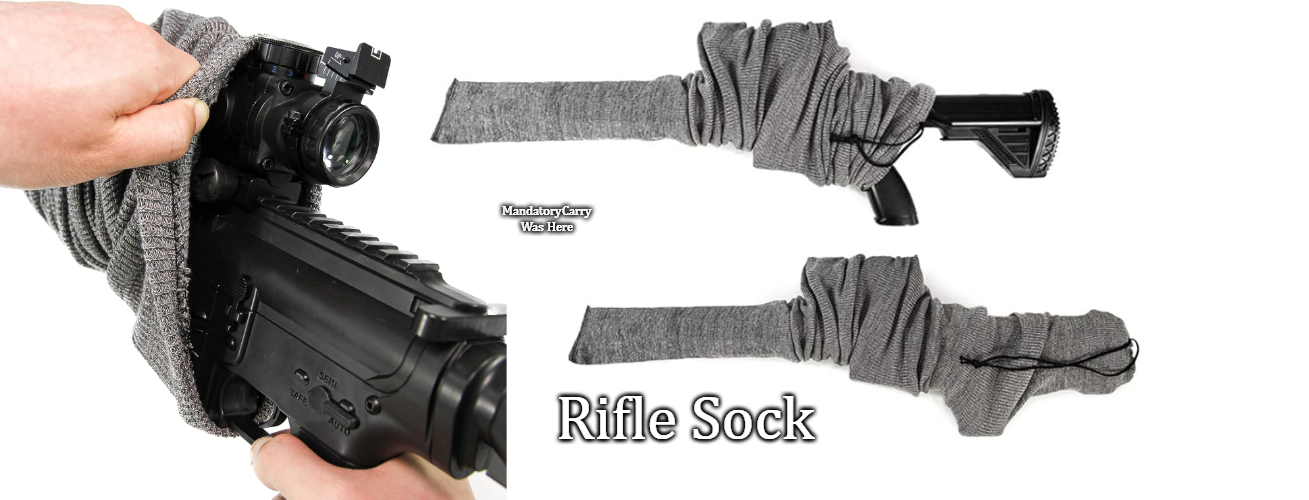 Gun Socks: Oversized sock-like fabric covers for protecting weapons from moisture, dirt, and scratches. Leather and kydex versions are used by hovercycle troops and kydex versions by tankers and pilots. Gun Socks: Oversized sock-like fabric covers for protecting weapons from moisture, dirt, and scratches. Leather and kydex versions are used by hovercycle troops and kydex versions by tankers and pilots.Effect: Protects weapons (especially rifles); "Highly" effective. Weight: ⅛lb. Cost and Availability: 100-200 credit; Always. Rubber Ducky YOU MAKE THE END TIMES SO MUCH FUN! 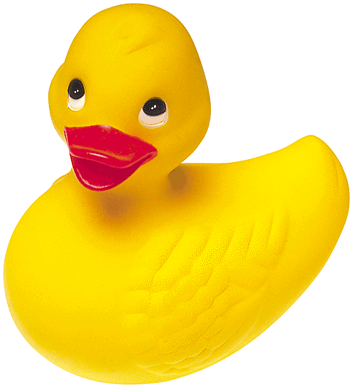 Used by billions the galaxies over. Redding every years has a Ducky Derby; Several years ago, the city needed to do some sort of hydrological survey on the Sacramento River (something about fresh water supplies). So they dumped a load of floats, but most of them got lost, swept downriver, wudavya. Oops. That didn't work. So they tried again- This time, with those ubra-famed yellow rubber duckies, literally thousands of them. Someone saw it and though, "Hey, that's a pretty good fundraising idea"- So they did it. Effect: 100% effective. Weight: ½lb. Cost and Availability: 1-2 credit; Always available. | |||||||||||||||
 | Survival Gear. |  | ||||||||||||||
Flown By Militry Bases And Ships. | Flown By Militry Bases And Ships. | |||||||||||||||
 As long as we can keep air going to your lungs, you can survive. You may lose your vision, your hearing, you may be paralyzed, but we can treat two of the three, and you can't hear anything in space anyways. On your mask alone you can survive up to 72 hours. Helmets, however, are preferred. As long as we can keep air going to your lungs, you can survive. You may lose your vision, your hearing, you may be paralyzed, but we can treat two of the three, and you can't hear anything in space anyways. On your mask alone you can survive up to 72 hours. Helmets, however, are preferred.The similarities between this mask and the M-335 Gas Mask are not coincidental; The M-335 Air Mask is identical, with the user able to switch out the gas canister for an air hose. However, the modern MCU-335 Air Mask also incorporates microphones for speaking and can deliver nutrients and water (via water bottles with 'hockey pucks' in them), making them far more capable than their ancient counterparts. Note that this is not a restricted item; In fact it's commonly available on colonial and cruise ships, and carrying one while outside of your own cabin is encouraged (attempts to mandate carrying one have consistently stalled at President's Point). | 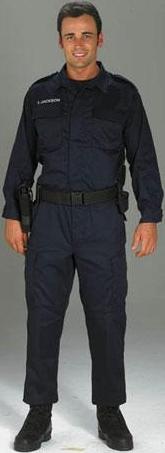 Properly worn, your space suit can sustain your life for up 30 minutes, even without the MCU-335. With your gloves, you can survive up to 4 hours in hard vacuum. Properly worn, your space suit can sustain your life for up 30 minutes, even without the MCU-335. With your gloves, you can survive up to 4 hours in hard vacuum.You flight suit will not protect you from flying debris (shrapnel), and has very limited redundancy from such; You need to wear your armor over the flight suit, especially in your torso, neck, groin, shoulders, head (protecting your very tiny brains), and thighs. Lower legs and arms are strongly recommended, hands are neither required nor, pragmatically speaking, entirely possible. Use of flight suits in not restricted to pilots, and in fact forms the base layer (after thermal liners when needed) for all UGC and affiliated forces (RDF, Regional and Local Forces, Law Enforcement, and Fire Response); The same basic features found in flight suits is also found in all levels of REF and related uniforms. UGC standard flight suits are equipped with thousands of various sensors much like those of thinking caps, though more attuned to sensing other bodily actions so that higher command authorities can keep track of their people. Civilian flight suits rarely have these sensors, though mercenry outfits are known to use them. | |||||||||||||||
In conjunction with your flight suit, your gloves can keep you alive up to 4 hours. Every class has some "Funnyguy" who says you
Flight gloves are also commonly used by infantry and armor personnel, though typically in camouflaging colors (black gloves are prohibited to infantry personnel in particular). | 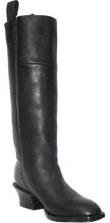 Required to be worn anyways, they provide impact and penetration protection for your feet. The extension on the heel gives the boot the ability to hook into foot pedals. Required to be worn anyways, they provide impact and penetration protection for your feet. The extension on the heel gives the boot the ability to hook into foot pedals.Authorized Configuration: One-piece vamp and top construction, 18" Shafts, Maple Leather Cowhide Lining, Leather insoles and outsoles, 18" Calf Circumference, 2" Square French Toe, 2" Stacked Leather Cuban Heel, Black 4oz Cowhide Leather Uppers, Metal shank for arch support, Toe CW: W-toe, Walking #9 (1⅝") Heel, Combo Walk #7 (1.635"). Flight boots are required for pilots and flight boots, but not for ships crews and are specifically prohinted to infantry (due to back injuries caused by the higher heel). | |||||||||||||||
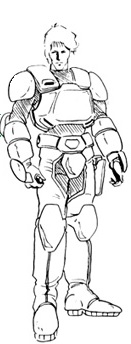 Again, provided physical protection against flying debris. No armor is 100% effective, but plate armor increases survivability 1,000%. There are extensively documented cases of the suits providing protection against Battle Pod cannons and lasers going back as far as the SDF-1, and even before that to the Pre-GCW Terran era; As the Terrans were the last to the interplanetary table, they were generally in the weakest position, yet made up for that quite well. Again, provided physical protection against flying debris. No armor is 100% effective, but plate armor increases survivability 1,000%. There are extensively documented cases of the suits providing protection against Battle Pod cannons and lasers going back as far as the SDF-1, and even before that to the Pre-GCW Terran era; As the Terrans were the last to the interplanetary table, they were generally in the weakest position, yet made up for that quite well.More recent developments in REF Veritech Fighter development in particular has made power armor a standard of flight armor, however pilots still train with standard flight armor as a precaution against unexpected scrambles (such as The Battle Of FLICAP6). The death of Commander Roy FOLKER of the SDF-1 era Skull Squadron can in part be attributed to the failure to wear body armor during combat ops; Had he been wearing his body armor as regulations at the time dictated, he most likely would never have been injured to begin with. More recent developments in REF Veritech Fighter development in particular has made power armor a standard of flight armor, however pilots still train with standard flight armor as a precaution against unexpected scrambles (such as The Battle Of FLICAP-06). Standard UGC armor is a thermos barrier (both cooling and heating), padding layer, then the plate and spall layer. The exact matrix of the armor is classified, but it consists of a ballistic vest of a ceroplate over a basalt weave over a metallic plate. |
The Roamer-6, also known as the Roamer-6 Emergency Escape Breath Mask, was an inexpensive portable device that could filter and purify air of dangerous gases, contaminants or debris. Adjustable straps cover the mouth and nose and the wearer can use a built in comlink. A flexible tube connected the mask to a small portable cylinder that used small scrubbers to filter out microscopic contaminants, allowing the user to breathe in various environments. Despite its efficacy the Roamer-6 can not protect the user from the vacuum of space or corrosive atmospheres. A tactic seen across the Rakatan Galaxy during the final annexation was the use of poison gas; REF personnel quickly learned to don their own masks if they saw civilians wearing them, as insurgents would soon be releasing their gas to deter their liberators. Although formally organized forces denied it, it's believed by most that First Order used gas extensively as a terror tactic against civilians when they saw that the REF was winning. | |||||||||||||||
| Allows you to rescue yourself by flying to a rescue craft. Do not use unless your ride is within CLEAR eyesight. Once you get moving, stopping is pretty hard. | Your cockpit has EVERYTHING listed here except the maneuvering unit, including extended air tanks, and will keep you alive longer than everything else combined. It is also the best way to find you; Take the SEARCH out of Search and Rescue. | |||||||||||||||
| Remember- WE ARE COMING TO FIND YOU, and we're likely bringing the big guns this time. It doesn't matter what the original mission was, this time the big iron bombers and heavy attack is coming to cover the rescue. Do everything in your power to assist us; Take the Search out of the Search and rescue by giving us a marker to your position; Take the Rescue out of Search and Rescue by coming to us. | ||||||||||||||||
 | Member's Kit. |  | ||||||||||||||
Flown By Militry Bases And Ships. | Flown By Militry Bases And Ships. | |||||||||||||||
| Every UGC militry member when in uniform is required to posses all of the following; 1. Basic Armor. This includes basic uniforms, though the type of armor naturally required increases by current expected duties. Dress uniform covers do provide some protection, but the TR-330 is the bare minimum required (may be removed while indoors or onboard unless a command directive otherwise is given, and then must be to hand). 2. Basic Weapon. Much like armor, the basic weapon increases as expected duties increases, at minimum the M-6 Laser Pistol (though members in certain duties are allowed to switch to the M-27 based on duties) and a spare e-clip. This is due to change to the H-100A within about 10 years (the H-120D to replace the M-27). 3. M-601 Multi-tool. 4. Command issued smartglasses/goggles. These don't have to be on the members face, just to hand. 5. Command issued earpiece. This must be worn at all times, though it can be swung away from the ear if not currently in use or when combined with the smartglasses/goggles. 6. Personal Data Assistant. This may be tucked away into a pocket, pouch, etc when not in immediate use. The PDA is the member's primary communications device and thus is critical to duties. 7. H-3 Mask. Experience has shown that the UGC's enemies are more than willing to use chemical weapons to offset their numerical and otherwise technical disadvantages. As a result the members must keep at least an emergency gas mask on hand at all times. The H-3 standard is rated at minimum for 4 hours use, giving them enough time to get to an MCU-335. 8. Member ID. The standard position of carry is left breast pocket, upper edge inboard. This way, if the member is unable to pull their ID themselves another can pull it out of the pocket and turn their wrist in the natural direction (for 93.2% of all species) to identify the member. More can be added on a command or higher directive. | ||||||||||||||||
 |  | |||||||||||||||
Flown By Militry Bases And Ships. | Flown By Militry Bases And Ships. | |||||||||||||||
| MRA6 "Radios" are actually satellite uplink connections keeping the individual war fighters continuously linked to any command. Any given war fighter in the field links their Type 11 to their MRA 6. MRA 6's typically don't link directly to each other, though they can be. MRA 6's can be linked to more advanced uplinking equipment (antennas, laser link gear, etc.). | Type-11 wide band radios connect warfighters to each other directly, and connects their various equipment (headsets, rifles scopes, binoculars, body tracer sensors, smart glasses/gloves, etc.) to the war fighter's gear (including the MRA 6). | |||||||||||||||
| Attemtps to combine the MRA 6 and Type 11 into a single system have proven unsuccessful; When a promising piece comes along, it proves to be cost or weight prohibitive. More often the unit proves to be either too weak or power hungry to be effective. However, the UGC continues to try to achieve a lighter set of gar for the warfighters in the field. | ||||||||||||||||
The disk shaped packets provide a full day's dietary needs; However, they are not "supposed" to be used for more than 72 hours at a time. This recommendation is occasionally ignored. The packets come in many flavors; Meats, fruits and vegetables, and even alcohols. They can be broken up into half inch square cubes, dropped into a quart of water for about 5 minutes, then shaken vigorously, creating a packet-flavored water; Soldiers "rarely" mix meats or vegetables (though sometimes meats are mixed with vegetables to make "beef/pork/chicken/other stew"), but fruit packets often are, and alcohols usually are (the alcohol flavored ones have no alcohol in them). Partially eaten packets can be saved for up to 3 days, allowing soldiers to mix and match flavors to some degree; The intergalactically famous Chef SHIDOE Mapes developed at least 5 publicly acknowledged "recipes" by combining packets in specific ratios (she openly admits there were others, but described them as "unacceptable" and thus wouldn't publish those; they were leaked out anyways, and most people agree they aren't as good). Most soldiers are issued a canister of 12 packets in semi-random combinations; 2 meats, 2 alcohols, 3 vegetables, and 5 fruits. The label indicates the species they are compatible with. The packets, called "hockey pucks," are described as reasonably flavorful, slightly chewy with a good bite; They can be hard to swallow if not properly chewed (a "defect" the REF is working on), and reasonably filling (but never perfect). Controversy; These packets were inspired by T'sentraedi meal packs; The T'sentraedi use dead warriors as part of that process ("Quenno," which best translates as "the retrieval"). Every new species that enters the Galactic, when they learn of the history of the packets, object to their use; It usually takes a few years to get them over the idea that their field rations are inspired by cannibalism. The Rakatan galaxy, in particular, objected, with the Geh 'Dai threatening the leave the Galactic body, and the Syhith filing formal objections "on behalf of the people of the galaxy." Fortunately, this crisis was de-escalated by the REF sending a Robotech Factory to the Rakatan Galaxy, where it was toured by members of the Republic Militry, the Geh 'Dai Order (Grand Master DIO herself led the Order's delegation), and even Syhith and First Order delegates; Literally, anyone who wanted to send a delegation was invited to, with the reminder that the satellite was REF territory- And that whatever grudges existed outside the factory were to remain outside the Factory. The Mimbari, too, objected for a very long time, until the Council sent a special delegation to Mimbar itself to explain the situation. After that, the Rangers requested more information on how the packets worked, leading to them adopting the Type H-H-1 "Unflavored" packets as their standard rations... Over UGC and REF objections. (Most Rangers simply buy packets online anyways; When ordering the Rangers can receive a discount by their "Allied Agency" status, which the REF is supposed to report- and don't. There's also some strange "glitch" that causes Ranger orders to be 50% off, rather than the standard 10% off "because the Council doesn't want them eating water.") The issues is normally prevented entirely by explaining REF field rations well in advance, allowing the shock of the idea of canablaism in certain parts of the UGC's past to wear off before entry into the Council even begins, however sometimes (especaily when a degree of urgency is involved, such as the Mimbari and the Rakatan Galaxies) mistakes occur. It is noteworthy that while the Kobolese Colonies objected at first, the Cylons not only did not, but "appear" to have approved. | ||||||||||||||||



